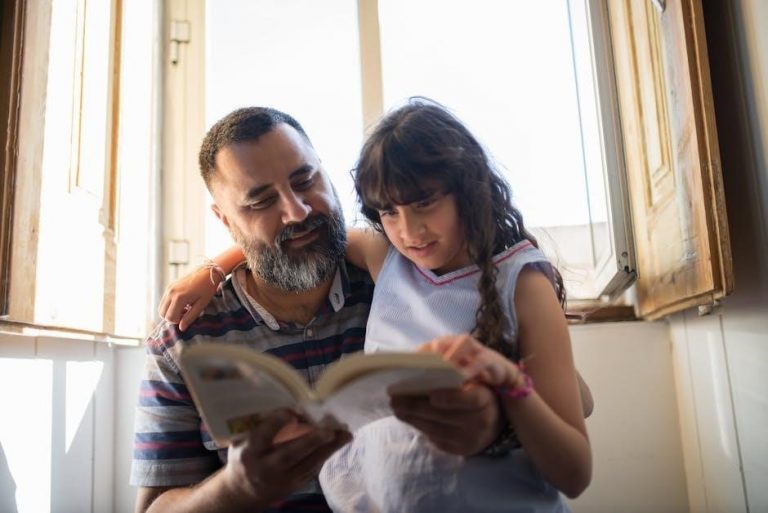Hajj is a sacred pilgrimage to Makkah, one of Islam’s five pillars, representing spiritual devotion and unity. Millions gather annually, seeking a transformative experience through rituals reflecting faith, sacrifice, and connection to Islamic heritage.
1.1 Overview of Hajj
Hajj is the fifth pillar of Islam, a mandatory religious duty for Muslims who are physically and financially capable. It is performed annually in Makkah during the Islamic month of Dhul-Hijjah. The pilgrimage begins on the 8th of Dhul-Hijjah and concludes on the 13th, involving a series of rituals that reflect the life of Prophet Ibrahim (AS). Key rituals include donning Ihram, performing Tawaf around the Kaaba, running between Safa and Marwa, and standing in Arafat. The journey culminates in Mina, where pilgrims symbolically stone Satan and complete their spiritual purification. Hajj is a profound expression of faith, unity, and obedience to Allah.
1.2 Significance of Hajj in Islam
Hajj holds profound significance as one of Islam’s five pillars, symbolizing unity, equality, and spiritual renewal. It embodies the essence of submission to Allah, fostering a deep connection with the divine. The pilgrimage reflects the life of Prophet Ibrahim (AS) and his unwavering obedience, as well as the Kaaba’s status as a sacred hub for worship. Hajj is a journey of self-refinement, where pilgrims seek forgiveness, strengthen faith, and cleanse their souls. The Quran emphasizes its importance, calling it a duty to Allah, and it is a once-in-a-lifetime obligation for capable Muslims. Hajj’s rituals inspire humility, compassion, and a commitment to a righteous life.

Understanding Hajj
Hajj is a fundamental pillar of Islam, involving sacred rituals in Makkah. It includes three types: Tamattu, Ifraad, and Qiran, each with specific rules and eligibility criteria.
2.1 What is Hajj?
Hajj is the sacred pilgrimage to Makkah, obligatory for Muslims who are physically and financially capable. It is one of Islam’s five pillars, reflecting unity, devotion, and obedience to Allah. Hajj involves a series of rituals like Ihram, Tawaf, and Wuquf, symbolizing spiritual purification and connection to Islamic history. It is a once-in-a-lifetime duty, emphasizing equality and humility, as pilgrims wear simple attire and perform rites together. Hajj strengthens faith, fosters community, and commemorates Prophet Ibrahim’s legacy, making it a profound spiritual journey.
2.2 Types of Hajj: Tamattu, Ifraad, and Qiran
Hajj is performed in three distinct forms: Tamattu, Ifraad, and Qiran. Tamattu involves performing Umrah during the Hajj season before transitioning into Hajj rituals, recommended by Prophet Muhammad (PBUH). Ifraad is standalone Hajj, where pilgrims enter Ihram solely for Hajj without performing Umrah. Qiran combines both Umrah and Hajj, performed continuously in Ihram. Tamattu is most common, allowing pilgrims to fulfill both duties efficiently. Each type has specific rulings, but all share the same spiritual objective of worship and submission to Allah. Understanding these forms is essential for pilgrims to choose the most suitable method for their journey;
2.3 Eligibility Criteria for Hajj
Hajj is obligatory for Muslims who are physically, mentally, and financially capable. This capability is termed istitaah. Pilgrims must be free from disabilities hindering travel, possess sufficient funds for expenses, and ensure family responsibilities are met. Women typically require a mahram (male guardian) to accompany them, though some countries permit women to travel in groups without one. Pilgrims must also secure necessary visas and health certifications. These criteria ensure pilgrims can perform Hajj comfortably and fulfill its rituals with focus and devotion. Meeting these conditions is essential to embark on this sacred journey, emphasizing both personal readiness and logistical preparedness.

Preparing for Hajj
Preparing for Hajj involves physical, mental, and spiritual readiness. Pilgrims must pack essentials, complete health screenings, and arrange travel. Spiritual preparation includes reciting prayers and seeking guidance to ensure a focused and meaningful pilgrimage experience.
3.1 Essential Items to Pack
Packing for Hajj requires careful consideration to ensure comfort and adherence to rituals. Essential items include Ihram clothing, a prayer mat, Quran, prayer beads, and personal care items like toiletries and medications. Comfortable footwear is crucial for extensive walking. A reusable water bottle, sunscreen, and a hat are recommended for outdoor conditions. Include a travel documents pouch for passport, tickets, and health certificates. Women should bring a scarf for modesty. Pack layered clothing for varying temperatures and a small backpack for daily essentials. Don’t forget a notebook for reflections and dua. Ensure all items comply with airline baggage restrictions and are easily accessible during the pilgrimage.
3.2 Spiritual Preparation
Spiritual preparation is vital for Hajj, ensuring a meaningful and enriching experience. Begin by strengthening your connection with Allah through consistent prayer, Quran recitation, and sincere supplications. Reflect on past actions, seek forgiveness, and resolve to improve. Cultivate humility, patience, and gratitude, as these virtues are essential during the pilgrimage. Recite the Talbiyah prayer with heartfelt intention, symbolizing your commitment to Allah. Engage in acts of charity and good deeds to purify your heart. Seek knowledge about Hajj rituals and their significance to perform them correctly. Maintain a clean and pure state of mind and body, avoiding worldly distractions. This spiritual readiness will help you embrace the sacred journey with devotion and mindfulness.
3.3 Travel and Logistics
Proper travel and logistical planning are crucial for a smooth Hajj experience. Ensure all travel documents, including passports and Hajj visas, are in order. Book flights and accommodation well in advance, as demand is high during Hajj season. Choose a reputable Hajj tour operator to handle arrangements. Pack essential items like Ihram clothing, prayer mats, and medications. Stay informed about Saudi Arabia’s entry requirements and health guidelines. Arrange for reliable transportation to and from holy sites, as distances can be significant. Familiarize yourself with the layout of Makkah, Mina, and Arafat to navigate effectively. Keep emergency contacts handy and stay organized to avoid delays. Plan meticulously to focus on spiritual devotion during the pilgrimage.

Rituals of Hajj
The rituals of Hajj are sacred acts of worship, including Ihram, Tawaf, Wuquf at Arafat, and the Stoning of the Devil, symbolizing obedience and spiritual renewal.
4.1 Step-by-Step Guide to Hajj Rituals
The Hajj rituals begin with donning Ihram, a state of consecration, and reciting the Talbiyah prayer. Pilgrims then perform Tawaf, circling the Kaaba seven times, and complete it with a prayer behind Maqam Ibrahim. The next step is Sa’i, running between Safa and Marwa hills, symbolizing Hagar’s search for water. On the 8th of Dhul-Hijjah, pilgrims proceed to Mina, staying overnight and performing prayers. The following day, they move to Arafat for Wuquf, standing in devotion from noon to sunset. After sunset, they travel to Muzdalifah, offering Maghrib and Isha prayers and collecting pebbles for the stoning ritual in Mina. The pilgrimage concludes with the Farewell Tawaf and a final Sa’i, marking the completion of Hajj.
4.2 Importance of Tawaf
Tawaf, the act of circling the Kaaba seven times, is a cornerstone of Hajj and Umrah, symbolizing unity, equality, and devotion. It reflects the belief that life’s purpose revolves around obeying Allah’s commands. Pilgrims perform Tawaf to demonstrate humility, seeking spiritual purification and connection with the Divine. This ritual embodies the unity of Muslims worldwide, as millions gather to honor the sacred site. Tawaf is not just a physical act but a deeply spiritual experience, allowing pilgrims to reflect on their faith and seek blessings. Its significance lies in its ability to inspire introspection and renewal, making it a pivotal moment in the Hajj journey.
4.3 Experiencing Mina, Arafat, and Muzdalifah
Mina, Arafat, and Muzdalifah are pivotal sites in the Hajj journey, each holding profound spiritual significance. Mina, a vast tent city, is where pilgrims reside and perform prayers, symbolizing unity and preparation. Arafat, the Mount of Mercy, is the site of Wuquf, where pilgrims stand before Allah, reflecting on their faith and seeking forgiveness. Muzdalifah, the next stop, is where pilgrims collect pebbles for the Rami ritual and offer combined prayers under the open sky. These locations embody the essence of Hajj, fostering introspection, humility, and a deep connection to Islamic traditions. The experiences in these areas are transformative, shaping the pilgrim’s spiritual and emotional journey.

Post-Hajj Rituals
Post-Hajj rituals conclude the pilgrimage, with Tawaf al-Wada (Farewell Tawaf) marking the final circumambulation of the Kaaba. Pilgrims then return home, carrying spiritual renewal and divine blessings.
5.1 Tawaf al-Wada (Farewell Tawaf)
Tawaf al-Wada, or the Farewell Tawaf, is the final circumambulation of the Kaaba before departing Makkah. It is a deeply emotional ritual, performed after completing all Hajj duties, symbolizing a pilgrim’s gratitude and farewell. Pilgrims circle the Kaaba seven times counterclockwise, offering prayers and supplications. Men must not be in a state of ihram during this tawaf, except those who have already completed their Hajj rituals. Facing the Black Stone, pilgrims often recite the farewell dua, seeking Allah’s blessings for a safe journey home. This act strengthens spiritual connection and marks the end of the Hajj journey, leaving pilgrims with lifelong memories and divine grace.
5.2 Returning Home
Returning home after Hajj marks a pilgrim’s transition back to daily life, carrying renewed faith and spiritual rejuvenation. Pilgrims often bring sacred mementos like Zamzam water, symbolizing their divine connection. Sharing Hajj experiences with family and community fosters unity and inspiration. It is customary to distribute the meat of the sacrificed animal to the needy, embodying the spirit of charity. Pilgrims are encouraged to reflect on their journey, expressing gratitude for the opportunity and resolving to uphold their spiritual growth. The return home signifies a new beginning, with pilgrims striving to integrate the lessons of Hajj into their lives, fostering a deeper commitment to faith and righteousness.

Additional Tips and Resources
Discover essential tips, environmental advice, and recommended guides to enhance your Hajj experience. Explore resources for a spiritually enriching and sustainable pilgrimage journey with practical insights.
6.1 Practical Tips for Pilgrims
To ensure a smooth and meaningful Hajj journey, consider these practical tips. Stay hydrated by carrying a reusable water bottle, and wear comfortable, breathable clothing suitable for walking. Keep essential documents like your passport, visa, and medical records easily accessible. Utilize technology, such as Hajj guide apps, to navigate rituals and track important locations. Follow experienced guides and stay with your group to avoid getting lost. Practice patience and kindness, as millions gather in one place. Respect holy sites and maintain cleanliness. Carry a small first-aid kit and any personal medications. Plan for transportation and accommodations in advance, and stay informed about weather conditions. Lastly, mentally prepare for crowds and long walks, focusing on the spiritual significance of each ritual.
6.2 Environmental and Sustainability Tips
Minimizing your environmental impact during Hajj is crucial. Carry a reusable water bottle to reduce plastic use and opt for eco-friendly toiletries. Avoid single-use items and properly dispose of waste. Conserve water during ablutions and encourage others to do the same. Respect holy sites by not littering or damaging vegetation. Use public transportation or walk when possible to reduce carbon emissions. Pack lightweight, sustainable clothing and avoid excessive packaging. Stay informed about Saudi Arabia’s environmental initiatives for Hajj and participate in clean-up efforts. Remember, protecting the Earth is a form of worship, so strive to leave a positive impact during your pilgrimage.
6.3 Recommended Reading and Guides
Enhance your Hajj experience with essential reading materials and guides. Start with the Quran and Hadith to understand the spiritual significance of Hajj. Recommended books include “The Hajj Guide” by Abu Muneer Ismail Davids and “Hajj and Umrah: A Practical Guide” by Bilal Philips. Digital resources like Hajj apps provide step-by-step rituals, prayer times, and navigation tools. Utilize scholarly articles and videos for deeper insights into Hajj rituals and history. Carry a pocket-sized Hajj guide for quick references. Additionally, consult official Saudi Hajj guides for logistics and updates. These resources ensure a well-prepared and spiritually fulfilling pilgrimage.
